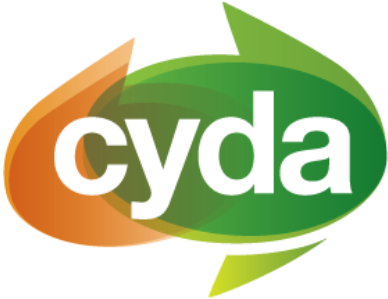Dragons, magic, and Ehlers-Danlos syndrome
Mel Bell writes about BookTok hit ‘Fourth Wing’ and its depiction of chronic illness and disability.
This article contains minor spoilers.
In ‘Fourth Wing’, the popular fantasy novel by Rebecca Yarros, we follow the story of our main character, Violet. While not explicitly stated, Violet is portrayed to have Ehlers-Danlos Syndrome (EDS) – a condition that is shared by the author which affects the body’s connective tissue. We see this characterised by Violet’s hypermobility, prematurely greying hair, joint pain, and brittle bones. Violet is also seen by others as being weak and fragile and is described to be very small in stature.
At the beginning of the story, Violet enters the Rider’s Quadrant – one of four quadrants in the story’s War College in which cadets are taught to ride dragons – at a clear disadvantage. Unlike most candidates who train their whole lives for the Rider’s Quadrant, Violet has only been training for six months due to her unique circumstances. Violet is the daughter of General Sorrengail and consequently feels she has to prove she deserves a spot in the War College, a feeling only worsened by the way her peers perceive her physical capacity. Despite these pressures, moments before Violet enters the college General Sorrengail emphasises that Violet’s experience with EDS has given her the ability to overcome extreme pain which will aid her in surviving the Rider’s Quadrant.
Yarros uses many other examples throughout ‘Fourth Wing’ to portray how Violet’s disability is a great asset. Yarros shows her to have great intelligence and tenacity, characteristics that have developed as a result of being unable to rely on her physical body. We see the importance of the characters who are closest to Violet to recognize these characteristics and to view her as capable and encourage her in her pursuits.
Violet makes friends in the Rider’s Quadrant through her kindness, generosity, and individualism. These friends grow to form a very protective and loyal support group for her and are crucial for her success and survival in the War College. They also partner with her, creating a team to pursue the things she is passionate about. The members of this new support group become the most important people in Violet’s life and greatly increase her quality and experience of life.
Yarros did a fantastic job showing how important a support network is to those living with disability.
Throughout the story, we are introduced to key characters who help Violet train and build the strength and skills crucial to her survival. Violet trains in hand-to-hand combat and strength training to strengthen her joints. She also receives specific training on how to use her daggers. She receives targeted wisdom and advice from key characters in her life including her brother, who presents her with an invaluable guide that proves to be an essential tool for Violet’s success and survival. The guide provides her with information that gives her the ability to plan to her strengths in advance and to make adaptations where needed, leading to success.
Yarros includes many examples of adaptation throughout ‘Fourth Wing’, and shows how it plays a crucial part in life with disability. As Violet enters the War College early in the story, she knows there are key components that help set her up for success. One example is the use of bracing or wrapping the joints she knows are prone to dislocation to help immobilise that joint to prevent dislocation. This also creates more strength and stability in that joint giving Violet the foundation she needs to perform best. Violet is gifted rider’s clothing, dragon-scale armour, rubber-soled rider boots, and a lighter backpack from her sister Mira, before entering the college. The clothing allows Violet to sheath multiple daggers that she uses as an alternative to a sword, which is too heavy. Violet also finds adaptative ways with her support team to mount and dismount and stay on her dragon while in flight and battle.
We meet a healer who is familiar with Violet and has been aiding her throughout her whole life. She trusts him and his intricate knowledge of her needs, condition, and previous injuries. Yarros draws a clear parallel here to show how the right therapists, practitionersm and support team can help a person with disability reach their full potential.
As ‘Fourth Wing’ unfolds, we as readers follow Violet in uncovering many truths. She discovers that the world is not what she was told it was and decides what she ultimately wants to fight for. She develops deep convictions to do what is right and makes goals to see these actions come to fruition with the help of her support team rallying with her. We see her become stronger with her support and all the adaptations and training she has had to become an incredible asset to the team.
An important element to note is that we see Violet struggle to accept her limitations, adaptations, and support. Author Rebecca Yarros herself says this was important to include as it can be challenging to accept these components of life with disability. We see Violet struggle with the reality of her disability and the emotions that come with it. We see her feel betrayed by her body at times and feel disadvantaged. While the adaptations, training, healing, and support are necessary for Violet, this doesn’t mean she enjoys needing to use them and even at times rebels against them. Yarros exceptionally portrays the complexities of struggling with disability and the impact it has on every aspect of one’s life.
Although Fourth Wing is a fiction novel, it draws real-world parallels about crucial factors in living with disability. This includes needing a good support network and having adaptations, training, and therapists who understand the needs of the person and their disability. We see a demonstration of how having these things can help someone reach their goals and potential, and follow their passions. Violet started as a character who was portrayed as being very small and weak – nobody thought she would survive the Rider’s Quadrant. However, with the right help, support, training, and adaptations, she becomes an incredibly valuable member of her team and community.
This article is an extract from CYDA’s The Platform Newsletter. Receive monthly updates by subscribing below.

About the author:
Hi, I’m Mel. I am very passionate about spreading the message of hope and helping others feel encouraged and less alone. In the past I have shared my journey to diagnosis with multiple chronic illnesses and disabilities and my experience of life. Now I share what is helping me improve and other things I am passionate about such as reading. I have a main Youtube channel and Instagram account @iammellbell, as well as a dedicated book account @thebookchameleon.

The Platform is our newsletter for young people with disability, featuring interviews, opportunities and news on the issues that matter to you!


